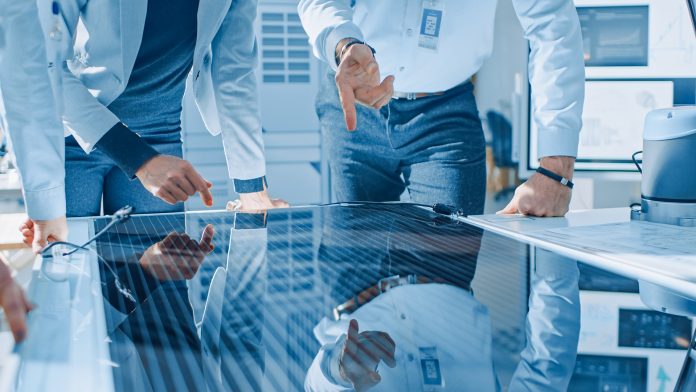Researchers at Kaunas University of Technology (KTU) have synthesised the materials that were used for constructing a record-breaking solar cell module, with a 21.4% efficiency.
Construction of the solar cells
To create the perovskite solar cells, scientists utilised the passivation of the active solar cell layer, which increased the efficiency of the cell and significantly improved its stability.
Perovskite solar cells are one of the fastest growing solar technologies to exist. This is because the elements of the cell are thin-layered, lightweight, flexible and are made of low-cost materials. Despite these advantages, this type of solar cell is known to face one particular issue, which is the quick degradation of perovskite material under environmental conditions.
To avoid this potential problem, scientists utilised passivation as a simple but effective method to improve the stability of the perovskite solar cells. This has been considered one of the most successful strategies for eliminating the defects of perovskite materials and their negative effects. This method assures that the passivated perovskite surface becomes more resistant to ambient conditions, such as temperature or humidity, and as a result becomes more stable with an extended device durability.
Synthesised materials
The KTU chemists, along with researchers from science centres in China, Italy, Lithuania, Switzerland and Luxembourg, found that as well as the stability being improved with utilisation of the passivation method, the perovskite solar call surface also became chemically inactive during passivation.
Thus, this assured that the perovskite defects that typically occur during the manufacturing process were eliminated, and the perovskite solar cells that were created from this were demonstrated to achieve an efficiency of 23.9% with long-term operational stability (over 1000 h).
“Passivation has been applied previously, but so far, a two-dimensional (2D) layer of perovskite is being formed on the traditional three-dimensional (3D) perovskite light absorber, making it difficult for carriers to move, especially at higher temperatures. It is critical to avoid this because the solar cells become hot,” said Dr Kasparas Rakštys, co-author of the invention and KTU chief researcher.
To address this issue, an international team of researchers conducted a study that estimated the minimum energy required to form 2D perovskite solar cells. The surface of the 3D perovskite layer was passivated by different isomers of phenylethyl ammonium iodide synthesised by KTU. These isomers have the same molecular formula but different arrangements of atoms in space, determining the probability of 2D perovskite formation.
Researchers from the Lausanne Federal Institute of Technology (EPFL) in Switzerland tested the materials in perovskite solar mini-modules with an active area over 300 times larger than the typical laboratory-scale perovskite solar cells. The surface of the perovskite layer of the record-breaking mini-solar modules was coated with materials developed by KTU chemists. These mini modules achieved a solar energy conversion efficiency of 21.4%.
“The study proved to be quite effective in preventing the negative effects of passivation on solar cells. It has been discovered that an isomer with the passivation groups closest to each other lead to the most efficient passivation due to the steric hindrance that avoids 2D perovskite formation. Interestingly, steric hindrance is also used as a tool in different areas of chemistry to prevent or slow down undesirable reactions,” commented Rakštys.
KTU researchers are currently working with colleagues from other countries to produce functional, hole-transporting materials and new perovskite solar cell compositions. According to Dr Rakštys: “International cooperation in science is vital because it is impossible to cover all the areas as chemistry, physics, and materials science working in such interdisciplinary field.
“After spending over 6 years in prestigious foreign research institutions, I decided to realise my scientific ideas in Lithuania, and thus contribute to the successful growth and popularisation of science in Lithuania. I believe that working in your own country can provide more meaning, inspiration, and self-realisation. The financial support provided by the MJJ Foundation has contributed significantly to this decision.”
KTU researchers aim to continue to synthesise, test and apply new materials that can contribute to the creation of solar cells that are even more efficient and stable.
“This is a very appealing area because perovskite solar cells are currently one of the fastest-growing technologies, and their successful commercialisation could contribute to climate change solutions,” concluded Rakštys.
The study conducted by Rakštys and his team, titled: ‘Tuning structural isomers of phenylenediammonium to afford efficient and stable perovskite solar cells and modules,’ was published in the journal Nature Communications.









